
Cooperative circle (top) and crossing (bottom) scenarios with robots and planners. Each robot is depicted with a different color. Collisions are marked with crosses surrounded by circles.
Authors introduce AVOCADO. The two-stage planner estimates other agents’ cooperation levels using nonlinear opinion dynamics, then adapts a Velocity-Obstacle policy for robust, communication-free crowd navigation
ieeexplore.ieee.org/document/109...
#CollisionAvoidance #RobotSensingSystem #Robotics
29.07.2025 17:30 — 👍 1 🔁 1 💬 0 📌 0

Our feature detection and matching on a challenging sequence in UMA-VI dataset. The red lines represent detected line features and the colored lines across images indicate feature association. The image may suddenly go dark due to turning off the lights, which is very difficult for vSLAM systems.
Paper "AirSLAM: An Efficient and Illumination-Robust Point-Line Visual SLAM System" at https://ieeexplore.ieee.org/document/10874215
Check out the latest on the T-RO Visual SLAM special collection. Keep checking back as many more papers will be added to this collection in the coming months.
ieeexplore.ieee.org/xpl/topics-i...
#VisualSLAM #RobotLearning #GaussianSplatting
24.07.2025 20:00 — 👍 0 🔁 0 💬 0 📌 0
A huge welcome to our new T-RO editorial board members. We are grateful for your commitment to the journal and look forward to working with you. Thank you!
www.ieee-ras.org/publications...
#IEEEras #Robotics
22.07.2025 19:57 — 👍 1 🔁 1 💬 0 📌 0
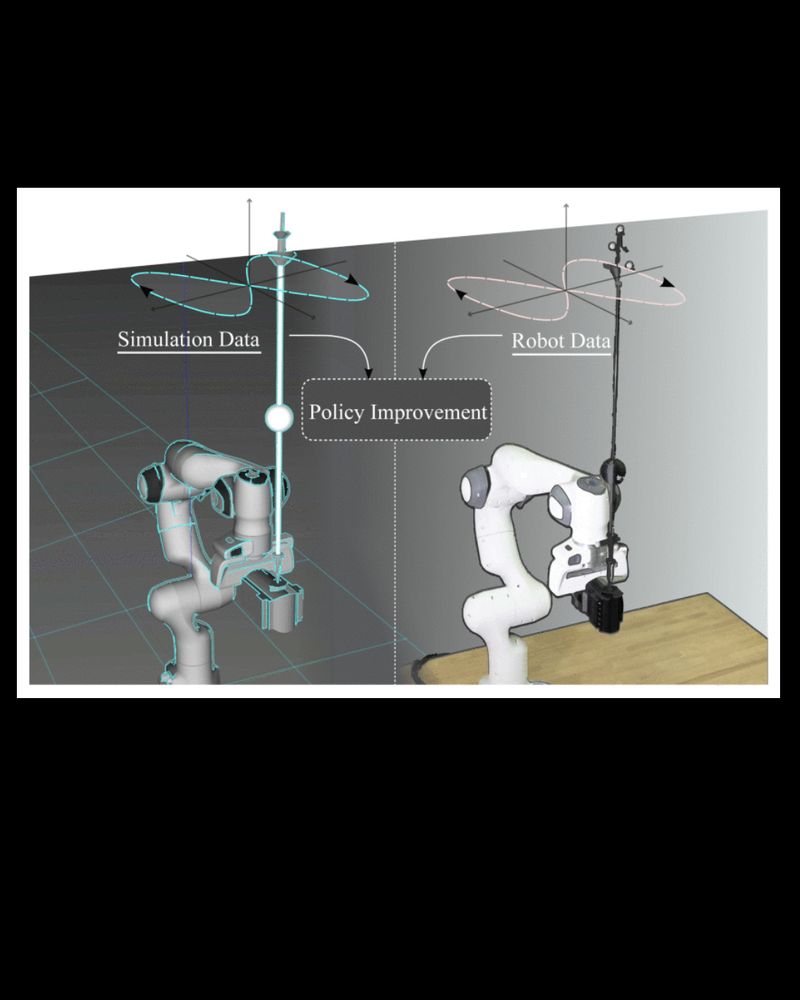
Experiment setup: A robot manipulator is balancing a planar pendulum and learning to follow the reference trajectory with the pendulum. Left: Simulator. Right: Real hardware.
Researchers introduce a hybrid real‑to‑sim‑to‑real learning approach that helps robots adapt quickly to new tasks with minimal trials. The result? Faster learning and stronger performance with fewer attempts.
ieeexplore.ieee.org/abstract/doc...
#RobotLearning #BayesMethod #SimToReal
18.07.2025 19:43 — 👍 2 🔁 0 💬 0 📌 0
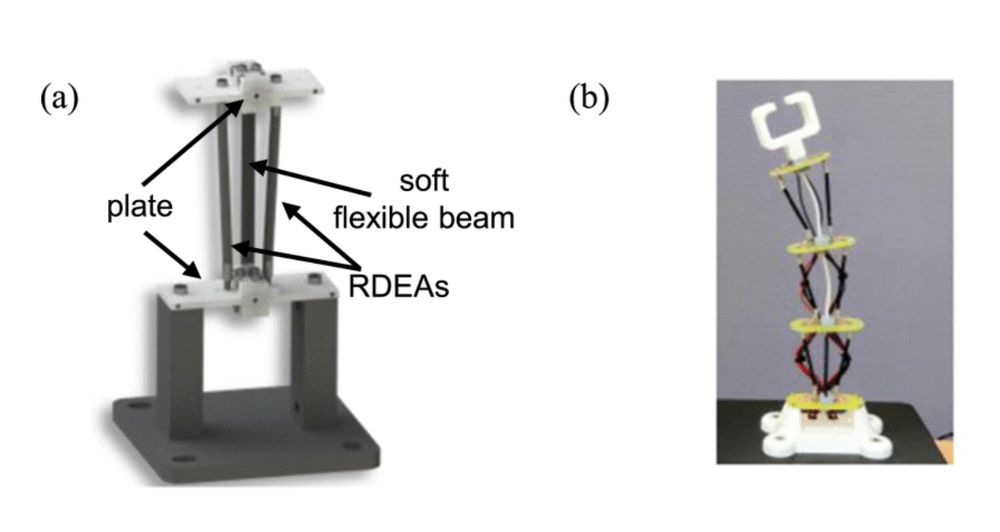
The first experimental validation of model-based robust position control for an underactuated dielectric elastomer #SoftRobot! This shows the controller stabilizing arbitrary configurations despite underactuation & input saturation.
ieeexplore.ieee.org/document/108...
#Robotics #ControlSystems
18.07.2025 19:36 — 👍 2 🔁 1 💬 0 📌 0

Task is to move three objects to the goal tray. The full states of the dotted objects are not known precisely. A task and motion plan will have gaps, which can only be filled in during execution, e.g., the blue object's pose can only be known after opening the drawer. The problem imposes constraints visualized in a block-world-like diagram at the lower part of the figure.
T-RO Honorable Mention paper entitled “Task and Motion Planning for Execution in the Real” introduces a framework integrating task and motion planning for real-world robotic execution under uncertainty, improving adaptability
ieeexplore.ieee.org/document/105...
#RobotSensingSystems #Robotics
11.07.2025 11:45 — 👍 0 🔁 1 💬 0 📌 0
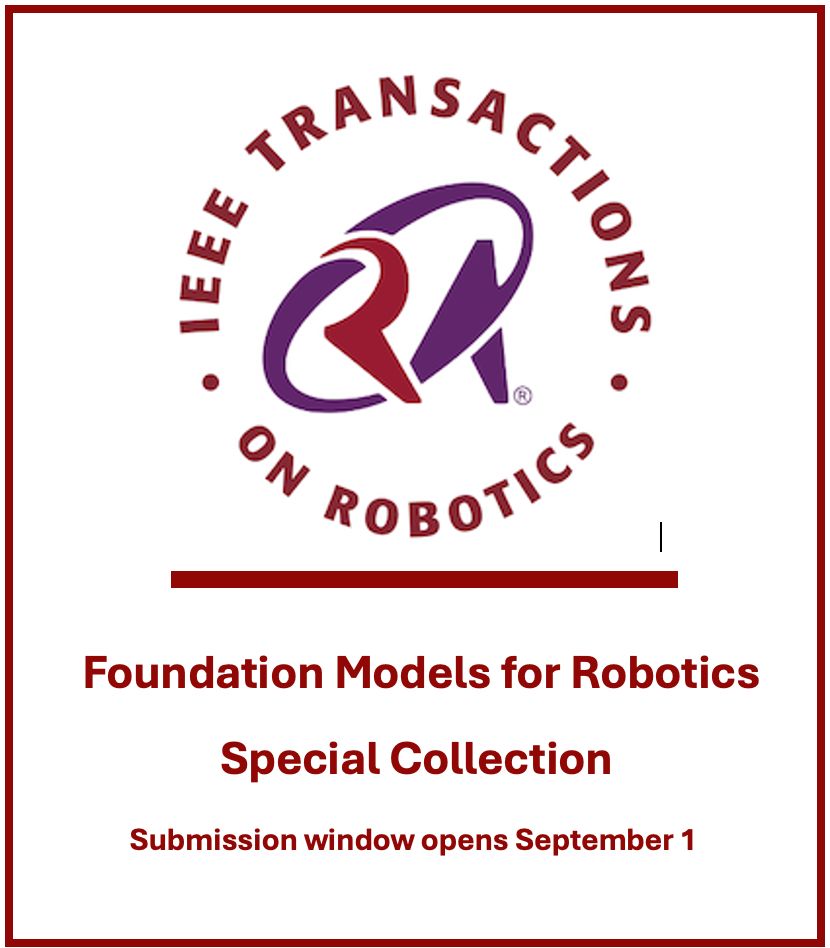
T-RO logo Foundation Models for Robotics Special Collection. Submission window opens September 1.
T-RO is proud to announce the upcoming special collection, Foundation Models for Robotics. Submission window opens September 1.
#RobotEmbodiments #FoundationModels #RoboticsFoundationModels #RoboticVLM #RoboticsLLM #IEEERAS
10.07.2025 20:55 — 👍 1 🔁 1 💬 0 📌 1
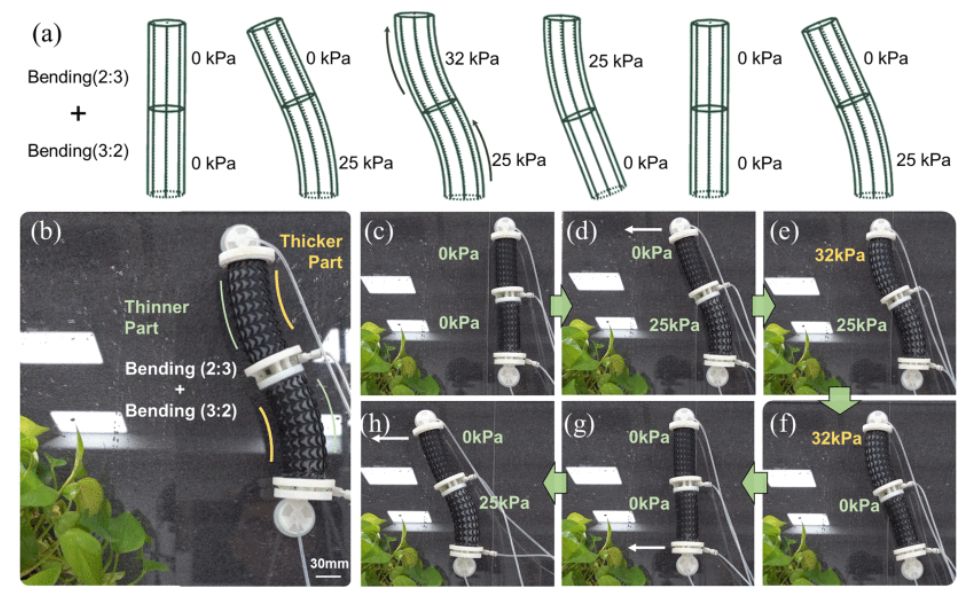
Lateral-climbing soft robot is designed consisting of a two-inputs soft actuator and two silicone suction feet. (a) Theoretically predicted antisymmetric deformation of soft actuators consists of two bending segments with \$n\$ = 3:2 and 2:3. (b)–(h) Soft robot moves laterally on the vertical surface due to the periodical input pressures.
Honorable Mention paper, “Modeling & Design of Lattice-Reinforced Pneumatic Soft Robots” proposes a design methodology for #SoftRobots using lattice structures to enhance strength and control complex deformations.
ieeexplore.ieee.org/document/103...
#PneumaticSoftRobots #RobotDesign
09.07.2025 18:15 — 👍 2 🔁 1 💬 0 📌 0
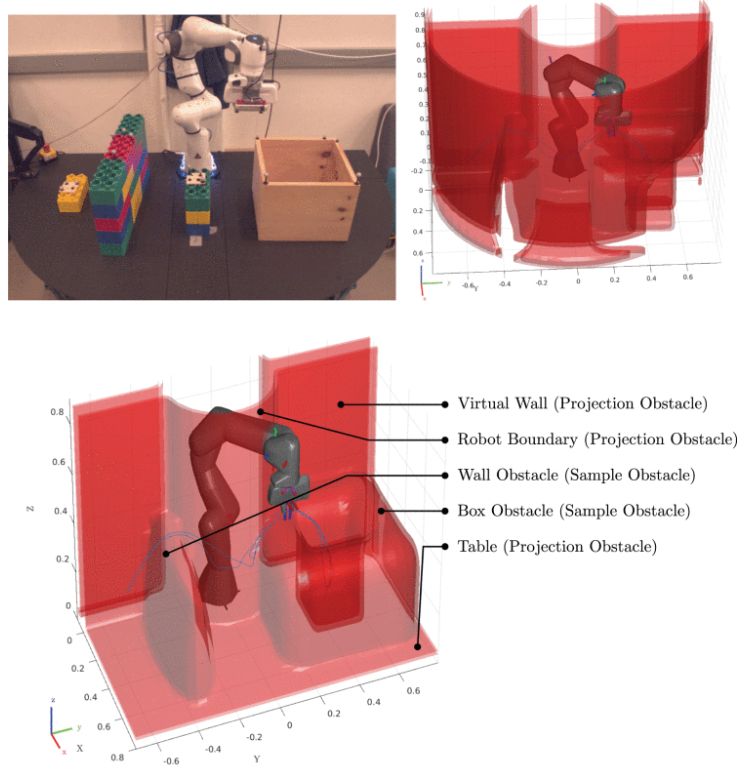
Proposed modulation approach applied to the end-effector of a robot manipulator as a real-time, reactive, motion planner. Our method is able to navigate around nonconvex obstacles with a control frequency of 1 kHz, while updating the obstacle states at 100 Hz.
A T-RO King-Sun Fu Award Honorable Mention paper develops reactive modulation techniques on manifolds for safe navigation around complex, non-convex obstacles in real-time.
ieeexplore.ieee.org/document/104...
Authors: Christopher K. Fourie, Nadia Figueroa, and Julie Shah
#RobotSensingSystems
07.07.2025 16:30 — 👍 1 🔁 0 💬 0 📌 0
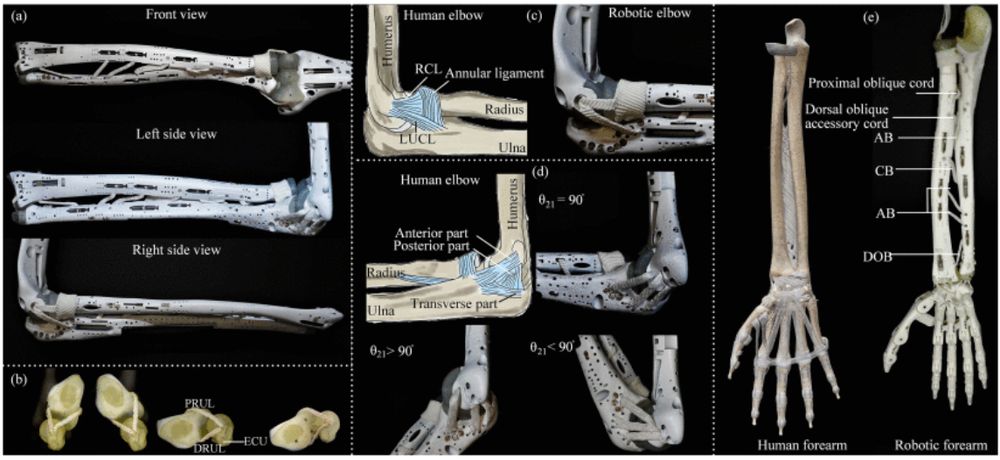
(a) Prototype of the skeleton-ligament system of the forearm and elbow, including front view, left and right side views. (b) TFCC during pronation. The DRUL will slide across the distal ulna head and then across the ECU before starting to bend. (c) LCL including RCL and LUCL, annular ligament of the human and robotic elbow prototype; (d) MCL of the human and robotic elbow. (e) Human forearm and hand, and the prototype of the robotic forearm and hand.
A T-RO King-Sun Fu Award Honorable Mention paper presents a #Biomimetic #RoboticArm optimized to closely replicate human joint performance, achieving high torque and range of motion.
ieeexplore.ieee.org/document/104...
Authors: Haosen Yang, Guowu Wei, and Lei Ren
02.07.2025 16:07 — 👍 0 🔁 0 💬 0 📌 0
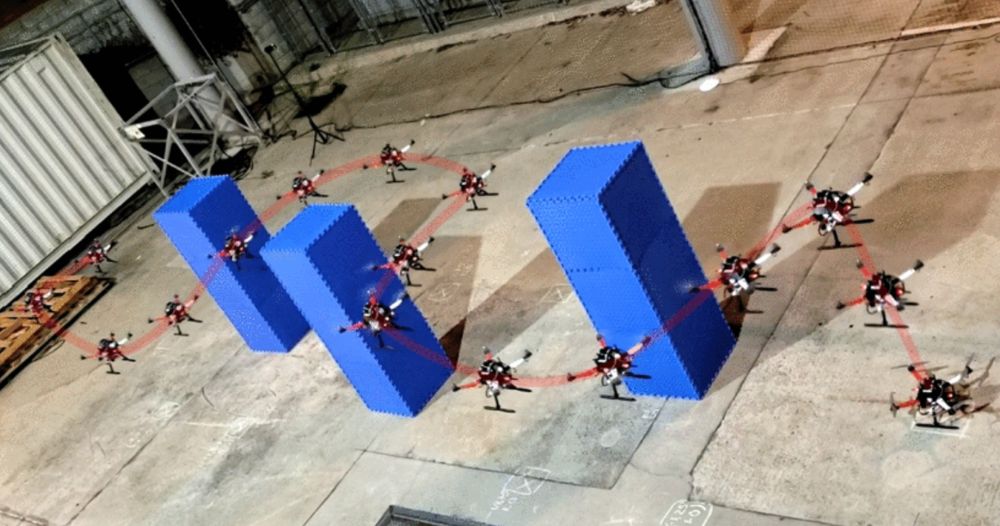
Quadrotor trajectory tracking using a learned port-Hamiltonian dynamics model.
TRO Honorable Mention recipient is a paper entitled “Port-Hamiltonian Neural ODE Networks on Lie Groups” which introduces a structure-preserving neural ODE framework for learning #RobotDynamics on Lie groups, enhancing stability and control accuracy
ieeexplore.ieee.org/document/10598388
26.06.2025 19:49 — 👍 1 🔁 0 💬 0 📌 0
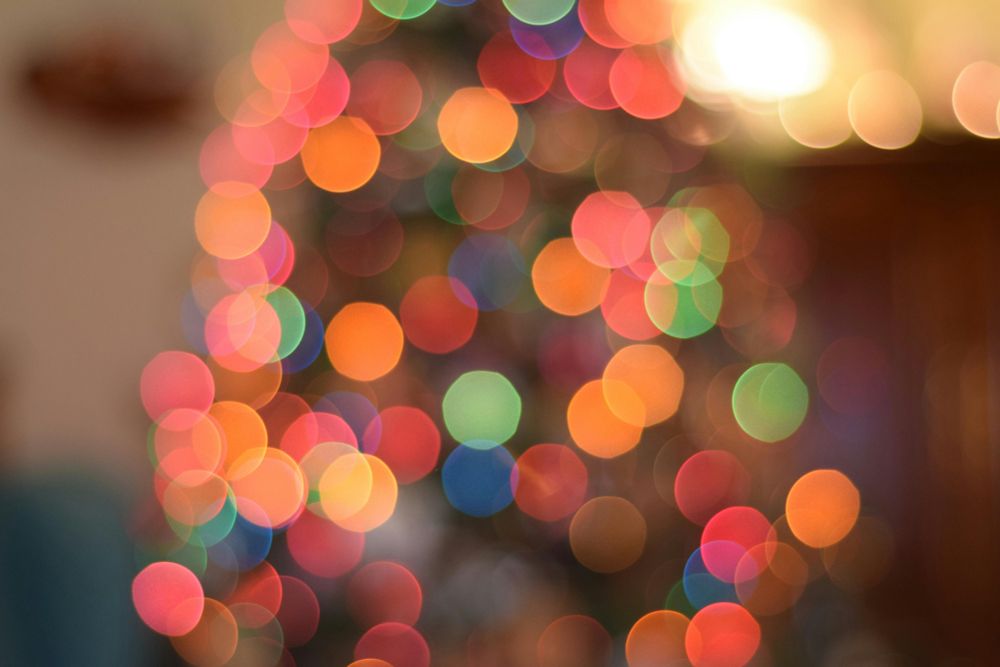
The new 2024 Clarivate JCR Journal Impact Factors have been published. We are proud to announce T-ROs impact factor is now 10.5 vs. the 2023 rating of 9.3. Congratulations and with much appreciation to our incredibly hard-working editorial board. Thank you!
24.06.2025 19:13 — 👍 0 🔁 0 💬 0 📌 0
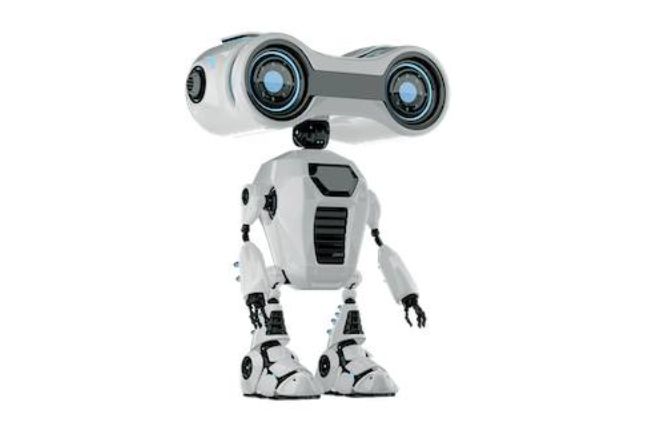
Last call. Event-based Vision for Robotics special collection is accepting submissions through June 30, 2025. Submit before the deadline.
www.ieee-ras.org/publications...
18.06.2025 15:46 — 👍 0 🔁 0 💬 0 📌 0
Get high-quality and efficient 3D reconstruction! This T-RO paper presented at ICRA 2025 combines the best of next-best view planning and set-covering view-planning to boost coverage & cut movement costs by 45%.
ieeexplore.ieee.org/document/107...
#3DScanning #ViewPlanning #ComputerVision
10.06.2025 16:39 — 👍 1 🔁 0 💬 0 📌 0

Call-for-papers, Robot-Assisted Medical Imaging!
A special thank you to handling editor Arianna Menciassi and guest AEs Zhongliang Jiang, Stamatia Giannarou, Sophia Bano, Tim Salcudean, and Nassir Navab
www.ieee-ras.org/publications...
#RoboticCT #SurgicalRobotics #RoboticLaparoscopy
06.06.2025 16:30 — 👍 0 🔁 0 💬 0 📌 0
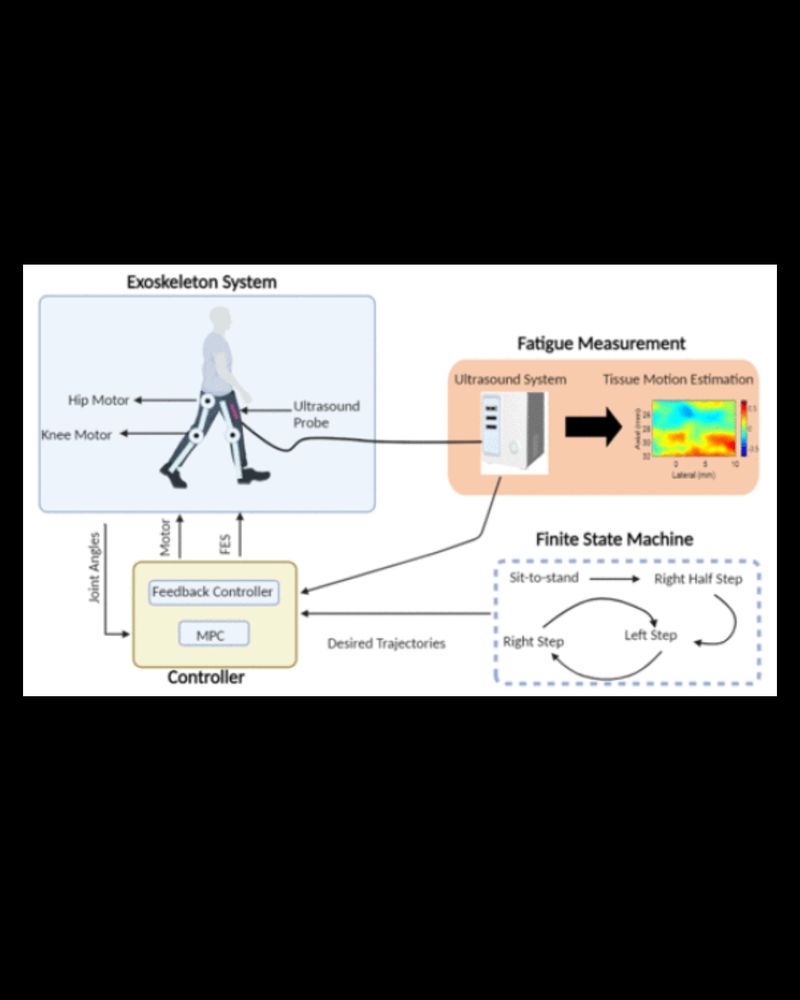
Overview of proposed real-time US imaging technique for shared control. Measuring US-derived strain changes during isometric contractions in real-time could lead to more accurate allocation between FES and motors during shared control. As the muscle fatigues, the hybrid exoskeleton should reduce the FES input while increasing motor usage.
This T-RO paper uses real-time ultrasound imaging to track functional electrical stimulation-induced muscle fatigue, creating a muscle-machine interface to optimize functional electrical simulation dosage & #exoskeletons control for users.
ieeexplore.ieee.org/document/10637757
03.06.2025 20:59 — 👍 1 🔁 0 💬 0 📌 0
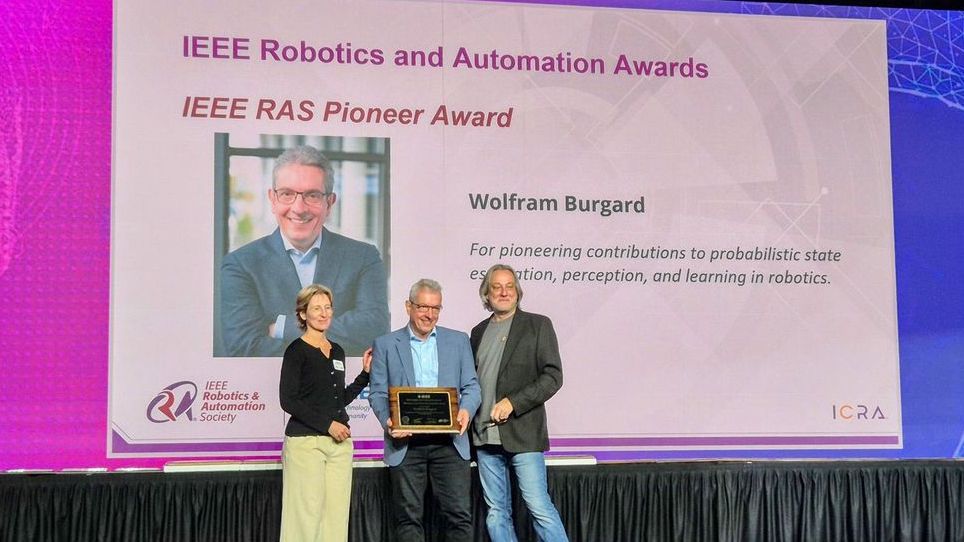
Wolfram Burgard receiving the IEEE RAS Pioneer Award, alongside Aude Billard and Seth Hutchinson.
Congratulations to TRO Editor-in-Chief, Wolfram Burgard @wolfram-burgard.bsky.social for receiving the @ieeeras.bsky.social RAS Pioneer Award. The society's highest distinction recognizes Dr. Burgard's pioneering contributions to probabilistic state estimation, perception, and learning in robotics
29.05.2025 19:29 — 👍 3 🔁 1 💬 0 📌 0
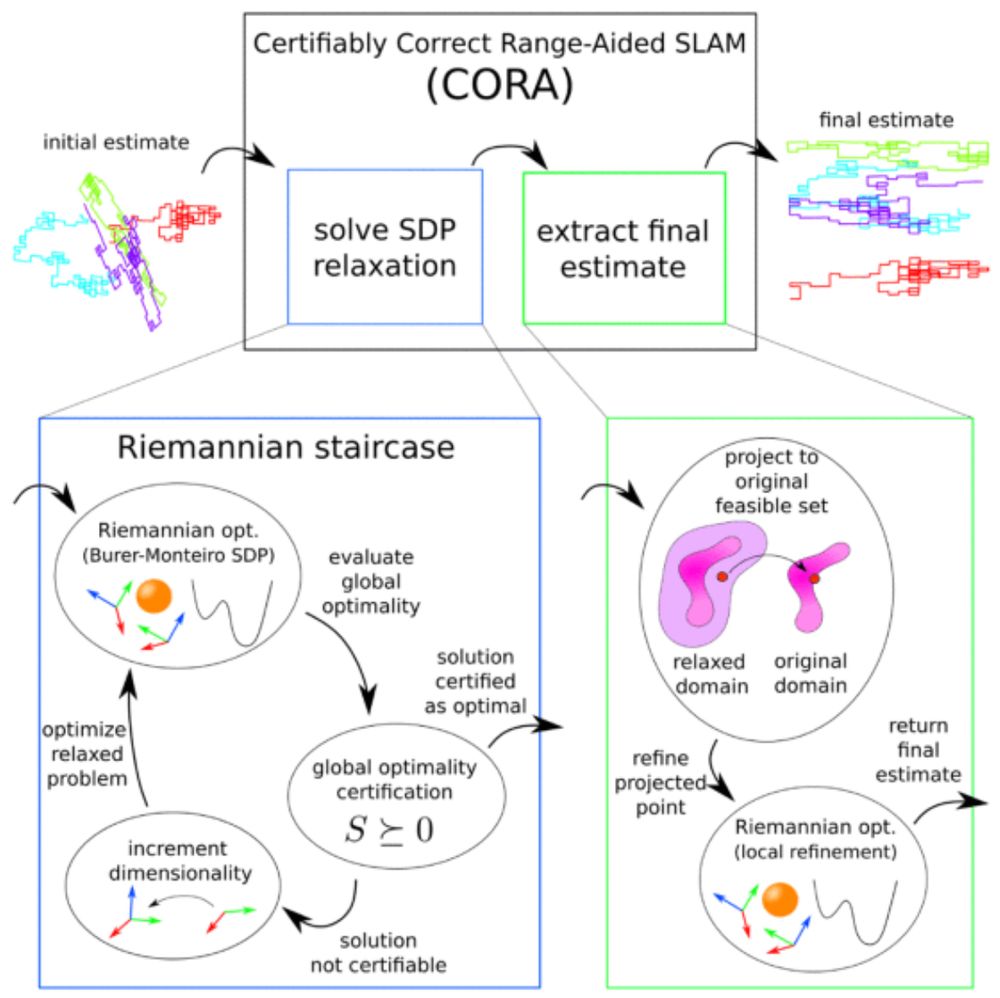
Schematic overview of the proposed algorithm on a four robot RA-SLAM problem. (Top) the high-level flow, which, given an initial estimate, solves a semidefinite program (SDP) relaxation of the RA-SLAM problem. As the SDP solution is not necessarily feasible for the RA-SLAM problem, a final estimate to the original problem is then extracted and returned. (Bottom-Left) The Riemannian Staircase methodology used to solve the SDP, in which optimization is performed over increasingly lifted Riemannian optimization problems until a certified solution to the SDP is found. The Riemannian optimization is over a product manifold involving orthonormal frames and vectors on the unit-sphere, certification involves evaluating positive semidefiniteness of a specific matrix, and lifting is equivalent to increasing the dimensions of the product manifold. (Bottom-Right) extracting the final estimate via feasible set projection followed by Riemannian optimization.
And the winner of the 2024 #TRO King-Sun Fu Award is the paper entitled “Certifiably Correct Range-Aided SLAM” which presents CORA, an algorithm achieving certifiably optimal solutions for range-aided SLAM problems, enhancing mapping accuracy and robustness.
ieeexplore.ieee.org/document/106...
27.05.2025 13:36 — 👍 2 🔁 2 💬 0 📌 0

There are 15 demonstration trajectories (red, green, and blue trajectories) that travel from the start to the goal, avoiding the obstacle. Middle and Right: MMP++ and IMMP++ learn 2-D manifolds in the curve parameter space and produce 2-D latent coordinate spaces. Latent values of the demonstration trajectories are visualized in the latent coordinate spaces, marked as ×. GMMs of three components are fitted in the latent spaces, and the sampled points are visualized as stars ∗. The corresponding generated trajectories are also visualized.
This T-RO paper presenting at #ICRA2025 introduces a method integrating parametric curves into Motion Manifold Primitives. This approach ensures isometric latent spaces for better performance & online adaptation.
ieeexplore.ieee.org/document/106...
#Robotics #MotionPlanning #AI #IEEEras
20.05.2025 19:41 — 👍 1 🔁 1 💬 1 📌 0
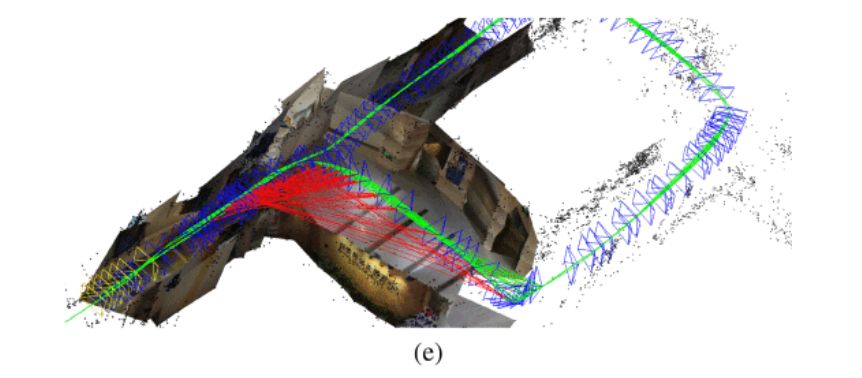
A graphic showing loop optimization, which merges and refines the globally consistent map.
This T-RO paper will be presented at @ieee-ras-icra.bsky.social introduces PRIOR-SLAM, leveraging geometric invariance via map segments & Perspective-Invariant ORB features for robust place recognition.
ieeexplore.ieee.org/document/107...
#Robotics #ComputerVision #Localization #ICRA2025 #SLAM
15.05.2025 21:03 — 👍 0 🔁 0 💬 0 📌 0
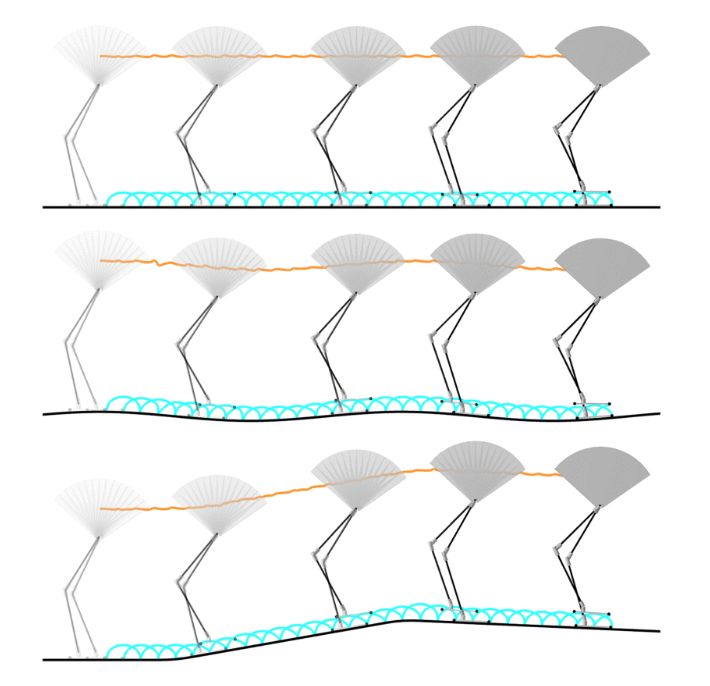
Biped walking from left to right across (top) flat, (middle) sinusoidal, and (bottom) piecewise linear terrain using the same policy.
This T-RO paper will be presented at #ICRA2025 develops a Contact-Implicit MPC method for controlling #robots making/breaking contact. The bilevel planner uses LCPs to reason about contact timing/forces online, generating new contact modes in real-time.
ieeexplore.ieee.org/document/103...
13.05.2025 21:28 — 👍 3 🔁 2 💬 0 📌 0
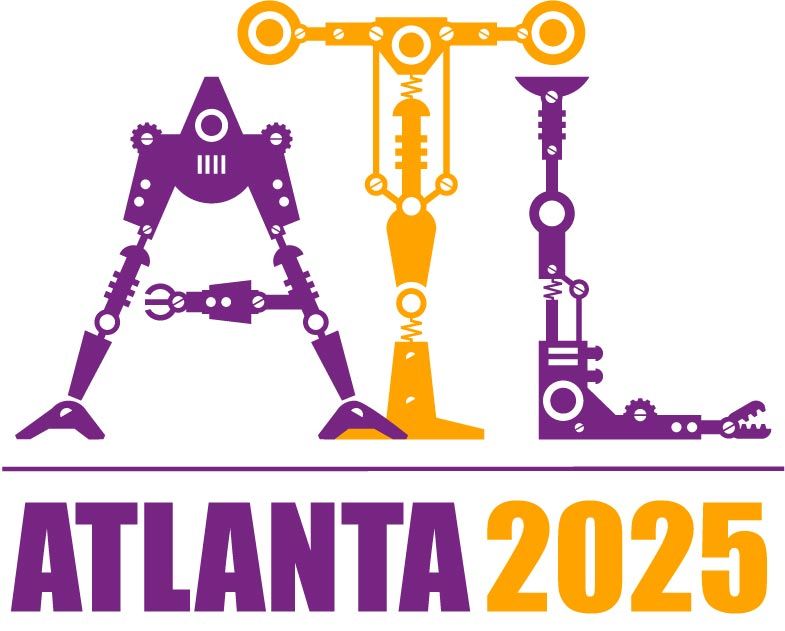
As we get closer to @ieeeras.bsky.social ICRA2025, we will spend the next month highlighting T-RO papers that will be presented. You can find a full list of the T-RO papers here: ieee-ras.org/publications/t-ro/t-ro-list-of-conference-papers
#ICRA2025 #IEEERAS #ICRAAtlanta #RobotAutomation #robotics
06.05.2025 16:59 — 👍 1 🔁 0 💬 0 📌 0
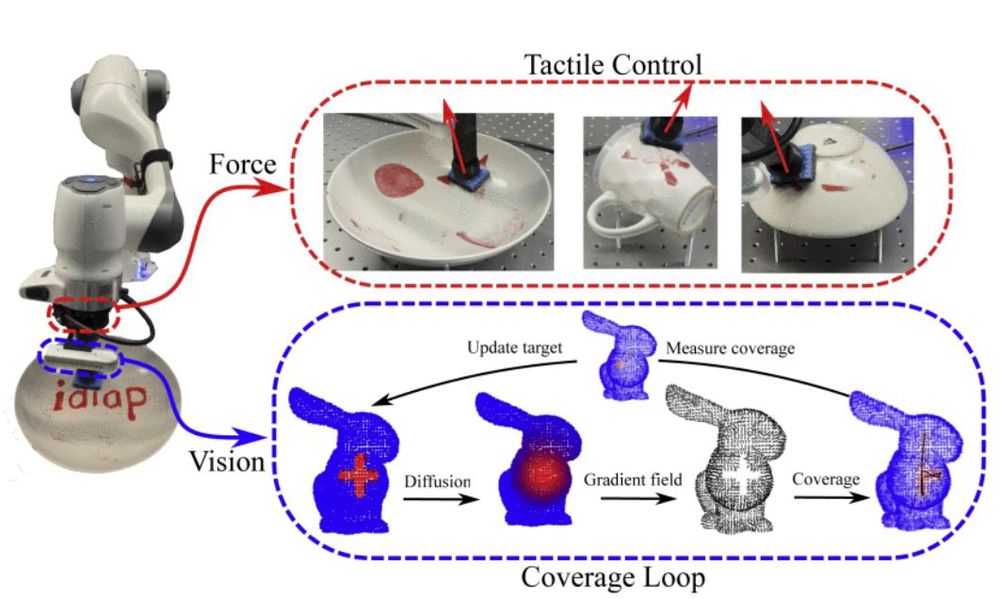
Overview of our feedback control method for tactile coverage. Left: We measure the surface and the red target using the camera and encode them in a point cloud. Bottom-right: We diffuse the target and use its gradient field to guide the coverage. Then, we close the loop by measuring the actual coverage with the camera and use it as the next target. Top-right: We measure the tactile interaction forces using the force sensor and the tool orientation using the joint positions. We solve the geometric task-space impedance control problem using a line target and a force target along the line.
Researchers from EPFL introduce a tactile coverage method that adapts to curved surfaces and target distributions in real time. This approach enhances tactile exploration and perception for #roboticsystems.
ieeexplore.ieee.org/document/108...
#ErgodicCoverage #TactileRobotics #PointCloud
01.05.2025 15:51 — 👍 1 🔁 0 💬 0 📌 0

(a) Keyframes of a demonstration of Task 5 in kitchen context executed by subject 1. Scene graphs generated encoding either only HO between hand and sponge or also OO between sponge and cooker. (b) Trends of average relative distance between hand and sponge and of their MI. (c) Trends of average relative distance between sponge and cooker and of the entropy of such a distance. (d) Segmentation result. .
Presenting a framework enabling robots to learn manipulation from offline human videos using Information Theory. By identifying key hand-object interactions and generating Behavior Trees, #robots can replicate human actions, with the open-source #HANDSOMEdataset.
ieeexplore.ieee.org/document/108...
01.05.2025 15:19 — 👍 1 🔁 0 💬 0 📌 0
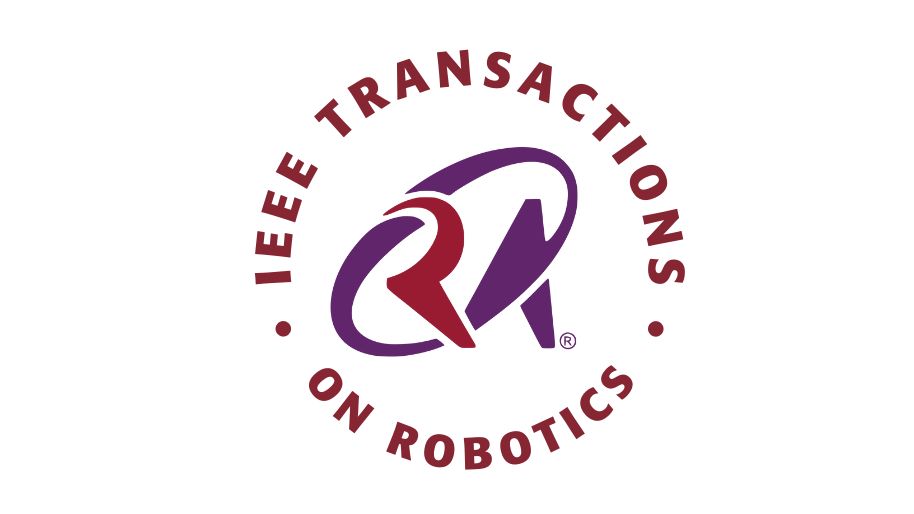
T-RO is calling for Robot-Assisted Medical Imaging papers. Submissions open June 1. Thank you to Arianna Menciassi, Zhongliang Jiang, Stamatia Giannarou, Sophia Bano, Tim Salcudean, and Nassir Navab for handling this exciting collection
www.ieee-ras.org/publications...
#RobotAssistedMedicalImaging
30.04.2025 16:22 — 👍 1 🔁 0 💬 0 📌 0
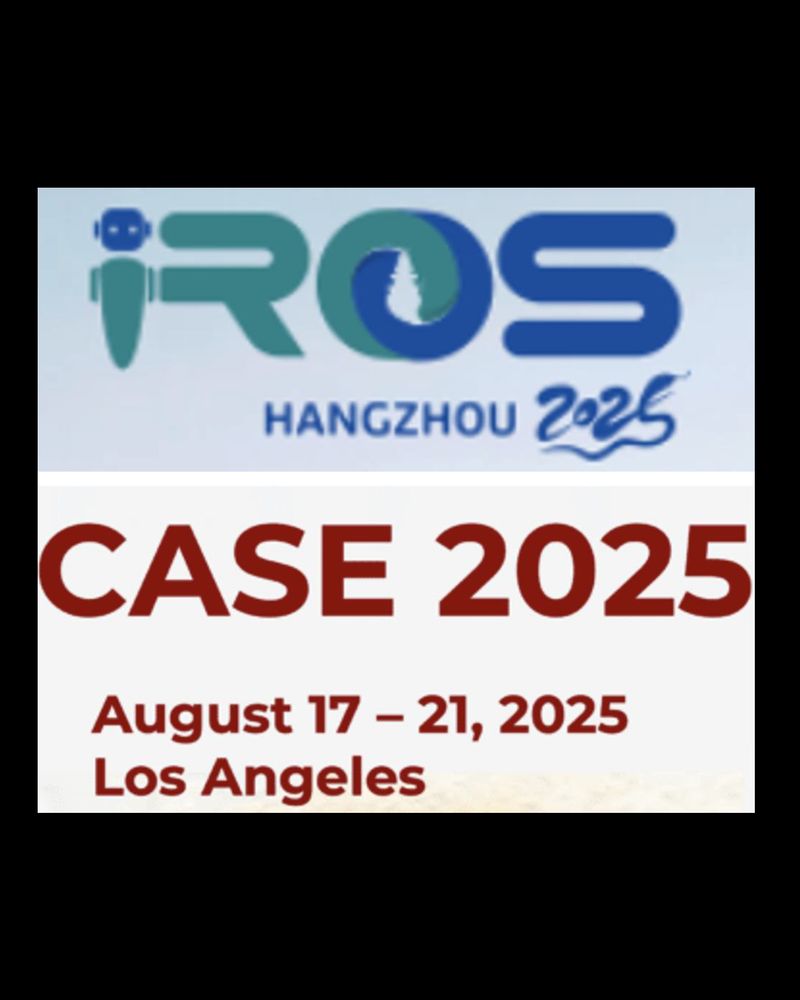
Two images. One with the IROS 2025 logo and the other with CASE 2025 logo graphics.
REMINDER: the transfer deadline for presenting a T-RO paper at CASE or IROS is April 30th!
www.ieee-ras.org/publications...
#IROS2025 #CASE2025 #IEEERAS
22.04.2025 19:28 — 👍 0 🔁 0 💬 0 📌 0
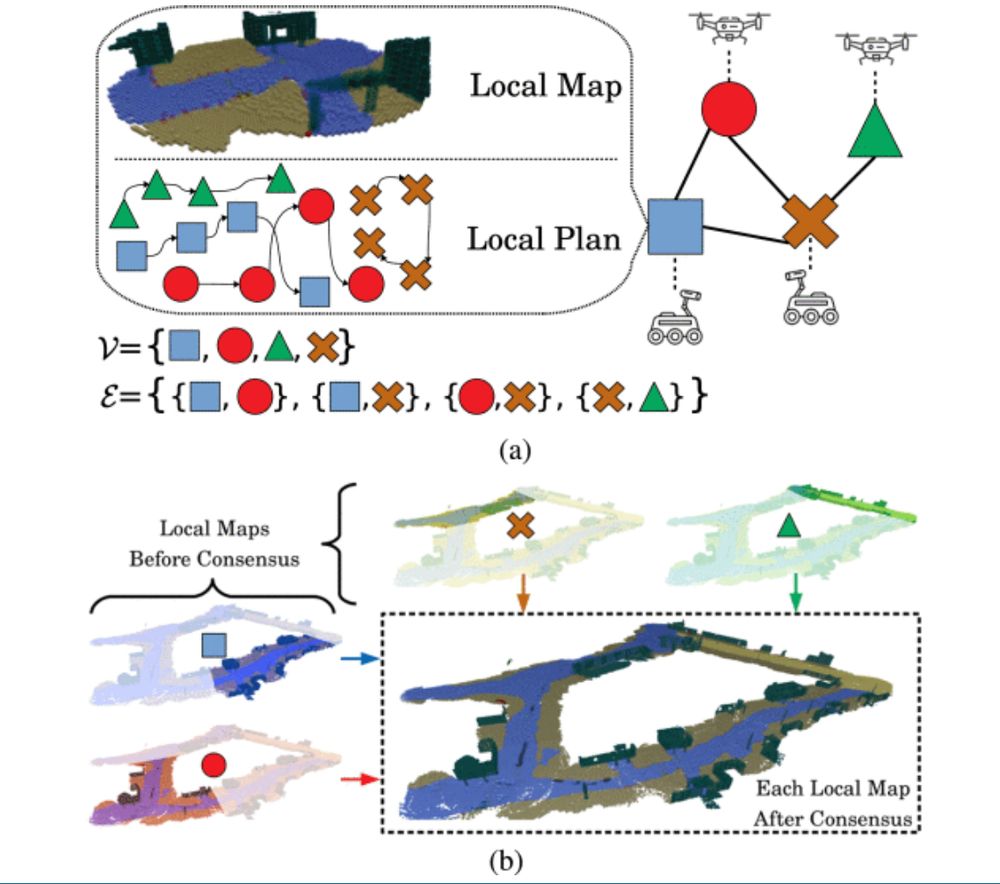
Overview of our distributed multirobot active mapping approach. (a) Team of robots, denoted by vertex set V, collaboratively explores an unknown environment, such as an impacted area during disaster response or a hostile area during military reconnaissance. Each robot builds a local map using onboard sensor measurements and computes a local plan for the team, with the goal of maximizing the collective information gathered by the team. The local maps and plans are communicated over a peer-to-peer network whose connectivity is represented by the edge set E. (b) As the robot team continues communication, the local maps stored by different robots become globally consistent in that they store similar information about the environment. (a) Robot network and the communicated messages. (b) Local maps become globally consistent over time.
In this T-RO paper, researchers from @ucsandiego.bsky.social and @tum.de present a distributed multirobot exploration method that enables teams of #robots to actively map environments more efficiently by optimizing exploration trajectories on a #RiemannianManifold
ieeexplore.ieee.org/document/108...
18.04.2025 13:18 — 👍 0 🔁 0 💬 0 📌 0
![World model illustration. (a) Example scenario with both objects of interests and background objects. The wall and ground belong to the background object with ID 1. The tree belongs to the background object with ID 2. The car and the two robots belong to the objects of interest with ID 3, 4 and 6, respectively, and are dynamic objects. The mailbox with ID 5 is an example static object of interests. Each object is assumed to be composed of a set of points on its surface. The set of the Ith object is marked as XI and the points within the set share the same color. (b) Particles (hollow points) that are used to model the PHD of the points. Particles with different IDs are shown in different colors. Particles with the same ID share the same motion. The particles are stored in voxel subspaces [15], which are also used for resampling and occupancy estimation. (c) Camera pinhole model used in this work to formulate the pyramid subspaces [15], which are used to distinguish the observed area and occluded area in the continuous space and to accelerate the update process. The green point is a measurement point in a pyramid subspace. The gray area behind the measurement point is occluded. Only a part of the points in X1 in (a), voxel subspaces in (b), and pyramid subspaces in (c) are shown for clear illustration.](https://cdn.bsky.app/img/feed_thumbnail/plain/did:plc:ttw5tcvxt52gbygtxrgvschk/bafkreia3k2stgv6ewad27uehveauubspl56e2olabf4yme2h57vdxtbaiu@jpeg)
World model illustration. (a) Example scenario with both objects of interests and background objects. The wall and ground belong to the background object with ID 1. The tree belongs to the background object with ID 2. The car and the two robots belong to the objects of interest with ID 3, 4 and 6, respectively, and are dynamic objects. The mailbox with ID 5 is an example static object of interests. Each object is assumed to be composed of a set of points on its surface. The set of the Ith object is marked as XI and the points within the set share the same color. (b) Particles (hollow points) that are used to model the PHD of the points. Particles with different IDs are shown in different colors. Particles with the same ID share the same motion. The particles are stored in voxel subspaces [15], which are also used for resampling and occupancy estimation. (c) Camera pinhole model used in this work to formulate the pyramid subspaces [15], which are used to distinguish the observed area and occluded area in the continuous space and to accelerate the update process. The green point is a measurement point in a pyramid subspace. The gray area behind the measurement point is occluded. Only a part of the points in X1 in (a), voxel subspaces in (b), and pyramid subspaces in (c) are shown for clear illustration.
The challenges of mapping dynamic environments. Particle-based instance-aware semantic occupancy map jointly estimates occupancy, semantics, and instance IDs to improve robustness and accuracy.
ieeexplore.ieee.org/document/108...
#RobotSensingSystems
11.04.2025 21:17 — 👍 0 🔁 1 💬 0 📌 0

Results of an outdoor flight test in a park. (a)–(f) present the bird's-eye view snapshots of the outdoor experiment. (g)–(l) Screenshots of data visualization in Rviz corresponding with (a)–(f). The UAV avoided the six walking persons while navigating on the park sidewalk.
Researchers from The University of Hong Kong introduce FAPP, a fast and adaptive perception and planning framework for @UAVs to navigate dynamic and cluttered environments
ieeexplore.ieee.org/stamp/stamp....
#CollisionAvoidance #VehicleDynamics #HeuristicAlgorithms #AerialSystems #ObstacleAvoidance
08.04.2025 17:20 — 👍 1 🔁 0 💬 0 📌 0
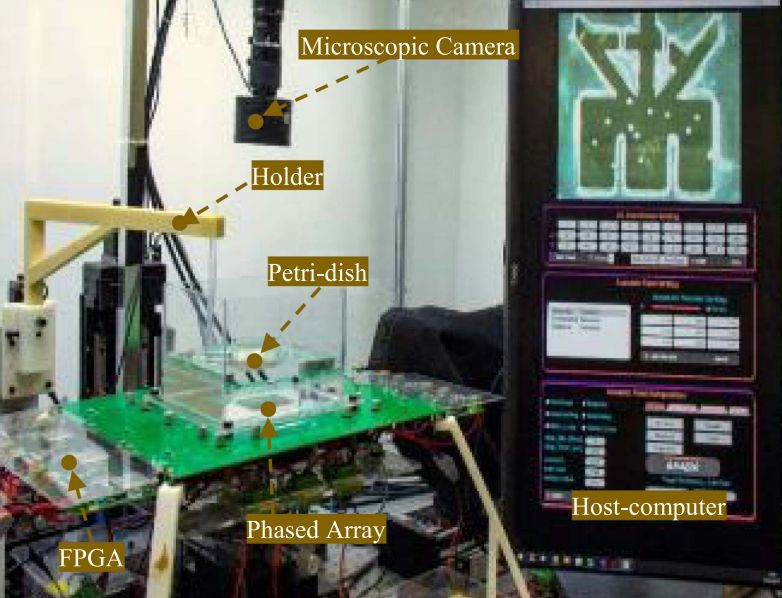
Illustrates the physical setup of the manipulation system.
In this T-RO paper, researchers at ShanghaiTech University explore how the noncontact manipulation of particles using an ultrasonic phased transducer array can enable precise material handling.
ieeexplore.ieee.org/document/108...
#SurfaceAcousticWaves #AcousticManipulation #PhasedArrays
03.04.2025 15:46 — 👍 0 🔁 0 💬 0 📌 0



























![World model illustration. (a) Example scenario with both objects of interests and background objects. The wall and ground belong to the background object with ID 1. The tree belongs to the background object with ID 2. The car and the two robots belong to the objects of interest with ID 3, 4 and 6, respectively, and are dynamic objects. The mailbox with ID 5 is an example static object of interests. Each object is assumed to be composed of a set of points on its surface. The set of the Ith object is marked as XI and the points within the set share the same color. (b) Particles (hollow points) that are used to model the PHD of the points. Particles with different IDs are shown in different colors. Particles with the same ID share the same motion. The particles are stored in voxel subspaces [15], which are also used for resampling and occupancy estimation. (c) Camera pinhole model used in this work to formulate the pyramid subspaces [15], which are used to distinguish the observed area and occluded area in the continuous space and to accelerate the update process. The green point is a measurement point in a pyramid subspace. The gray area behind the measurement point is occluded. Only a part of the points in X1 in (a), voxel subspaces in (b), and pyramid subspaces in (c) are shown for clear illustration.](https://cdn.bsky.app/img/feed_thumbnail/plain/did:plc:ttw5tcvxt52gbygtxrgvschk/bafkreia3k2stgv6ewad27uehveauubspl56e2olabf4yme2h57vdxtbaiu@jpeg)

